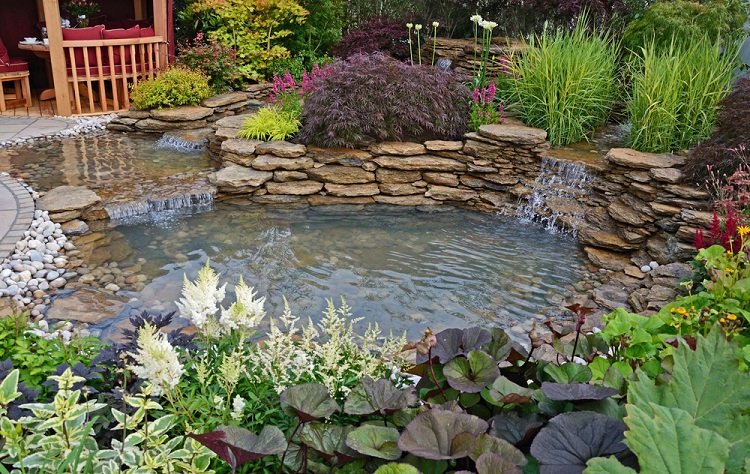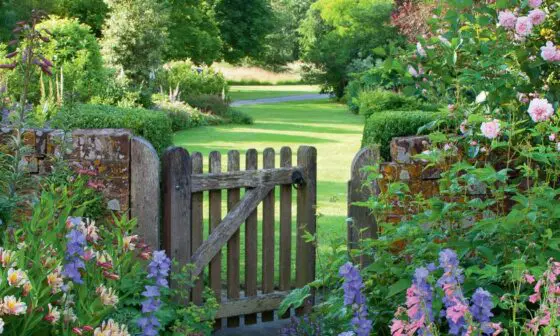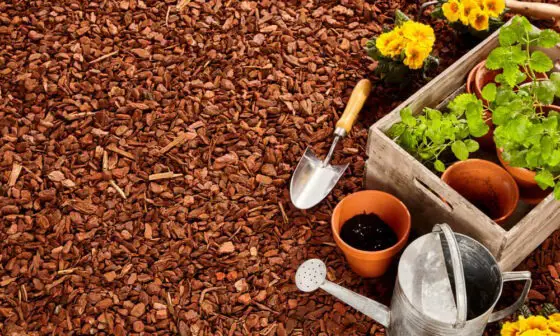
A garden pond can transform your backyard into a peaceful space, attracting wildlife and providing a serene retreat. Whether you envision a small, simple pond or a large, elaborate water feature, building a garden pond is a rewarding project that enhances the beauty and value of your garden.
This guide will walk you through every step of the process, from planning and construction to maintenance and landscaping.
Planning Your Garden Pond
Before you start digging, it’s essential to plan your garden pond meticulously, including finding out if you require pond planning permission. Proper planning ensures that the pond will be both functional and visually appealing. Consider the purpose of your pond, whether it’s to create a habitat for fish, a water feature for plants, or a tranquil spot for relaxation.
Selecting the Right Location
Choosing the right location is crucial. Look for a spot that gets both sun and shade throughout the day. Avoid areas with overhanging trees, as falling leaves can cause maintenance issues. Ensure the ground is level to facilitate proper water distribution.
Designing Your Pond
Designing your pond involves deciding on its shape, depth, and features. Common shapes include circular, kidney-shaped, and freeform. The depth should accommodate the types of plants and fish you plan to have. Incorporate shelves for plants at different depths.
Sizing Considerations
The size of your pond will depend on the available space and your budget. A larger pond can support more plants and fish and will generally require less maintenance per gallon of water. However, it also requires more initial investment in materials and equipment.
Essential Tools and Materials
The right tools and materials are crucial for building a garden pond that is both durable and visually appealing.
Pond Liners
Pond liners are crucial to prevent water from seeping into the ground. Options include flexible rubber liners, preformed liners, and concrete. Rubber liners are the most versatile and easiest to install.
Pumps and Filters
A pump is essential to circulate the water, keeping it oxygenated and preventing stagnation. Filters help keep the water clean by removing debris and harmful substances. Choose a pump and filter system that matches the size of your pond.
Skimmers and UV Clarifiers
Skimmers help remove floating debris like leaves and twigs from the water surface. UV clarifiers use ultraviolet light to kill algae and harmful microorganisms, keeping the water clear.
Rocks and Gravel
Rocks and gravel add a natural look to your pond and provide surfaces for beneficial bacteria to grow. These bacteria help break down organic matter and keep the water healthy.
Aquatic Plants and Fish
Select a variety of aquatic plants to enhance the beauty and ecological balance of your pond. Fish add life and movement but require proper care and a well-balanced environment.
Step-by-Step Guide to Building a Garden Pond
1. Preparing the Site
Begin by marking out the shape and size of your pond using a garden hose or string. Clear the area of any debris, rocks, or vegetation. Check for underground utilities before you start digging.
2. Excavating the Pond
Dig the pond according to your design, creating shelves at different depths for plants. The deepest part should be at least 2-3 feet to protect fish from predators and extreme temperatures.
3. Installing the Pond Liner
Place the pond liner in the hole, ensuring it fits snugly against the walls and shelves. Smooth out any wrinkles, and secure the edges with rocks or stakes.
4. Adding Rocks and Gravel:
Cover the bottom and shelves with a layer of gravel to hold the liner in place and provide a natural look. Add larger rocks around the edges to secure the liner and create a visually appealing border.
5. Installing the Pump and Filter System:
Set up the pump and filter according to the manufacturer’s instructions. Ensure the pump is submerged and properly connected to the filter system. Position the pump to create a gentle flow of water.
6. Filling the Pond with Water:
Slowly fill the pond with water, checking the liner for any shifts or wrinkles. As the pond fills, adjust the rocks and liner as needed. Allow the water to settle before adding any plants or fish.
Landscaping Around Your Pond
Enhancing the area around your pond with thoughtful landscaping can enhance its aesthetic appeal and create a harmonious garden feature.
Planting Marginal and Aquatic Plants
Select plants that thrive in and around water. Marginal plants grow on the edges of the pond, while aquatic plants grow submerged or floating. Arrange plants to create a natural, layered look.
Adding Decorative Elements
Incorporate decorative elements like rocks, pebbles, and driftwood to enhance the pond’s appearance. These elements also provide habitats for wildlife and contribute to the pond’s ecosystem.
Creating a Waterfall or Fountain
A waterfall or fountain adds movement and sound to your pond, enhancing its tranquillity. You can create a waterfall using rocks and a pump to circulate the water. Fountains can be purchased and installed easily.
Lighting Your Pond
Add lighting to your pond to extend its beauty into the evening. Submersible lights highlight underwater features, while landscape lights illuminate the surrounding area. Solar-powered lights are an eco-friendly option. Just be sure any electrical elements are done safely and by a professional.
Maintaining Your Garden Pond
- Seasonal Maintenance Tips: Each season requires different pond maintenance tasks. In spring, clean the pond and start up the pump and filter. Summer requires regular debris removal and water level checks. Fall is for leaf netting and preparing for winter. In winter, ensure the water doesn’t freeze completely if you have fish.
- Cleaning and Debris Removal: Regularly remove debris like leaves, twigs, and dead plants from the pond. A skimmer net can make this task easier. Clean the pump and filter periodically to ensure they function efficiently.
- Managing Algae Growth: Algae can quickly take over a pond if not controlled. Use UV clarifiers, barley straw, and algaecides as needed. Ensure the pond gets a balance of sunlight and shade to prevent excessive algae growth.
- Caring for Pond Fish: If you have fish, feed them properly and monitor their health. Avoid overfeeding, which can pollute the water. Provide hiding spots to protect them from predators and extreme weather.
Enhancing Pond Aesthetics
Enhancing the aesthetics of your pond involves adding elements that create a visually pleasing and harmonious water feature, contributing to the overall beauty of your garden.
Choosing Pond Plants
Select a variety of plants, including submerged, floating, and marginal species. Each type plays a role in maintaining a balanced ecosystem. Popular choices include water lilies, lotus, and cattails.
Attracting Wildlife
A well-designed pond attracts birds, frogs, and beneficial insects. Provide shallow areas and plant cover to create habitats for these creatures. Avoid using chemicals that can harm wildlife.
Incorporating Statues and Ornaments
Add personality to your pond with statues, ornaments, and garden art. Choose items that complement the overall design and theme of your garden.
Adding Floating Plants
Floating plants like water lettuce and duckweed provide shade and reduce algae growth. They also offer protection for fish and add to the pond’s aesthetic appeal.
Final Thoughts
Building a garden pond is a rewarding project that transforms your outdoor space into a serene oasis. With careful planning, the right tools, and regular maintenance, your pond will thrive and bring joy for years to come. Whether you’re looking to create a habitat for wildlife, grow aquatic plants, or simply enjoy the calming presence of water, a well-designed pond is a beautiful addition to any garden.
Ready to get started on your own garden pond? Visit Ponds by Michael Wheat for expert advice and everything you need to bring your vision to life. Create your tranquil retreat today!


